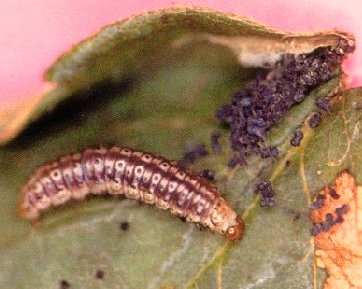Leafrollers I

Biology
Leafrollers are moth larvae. The slender larvae are pale-green to brown and are about 12 mm in length when fully grown. They have a dark-brown or black head. They are usually quite active, sometimes moving backwards when disturbed.
Symptoms Of Damage
Young larvae feed on unfolded leaves. Older larvae fold the leaves in half and hold them in place with webbing. Damage results from the larvae feeding within the folded, rolled or webbed leaves, causing them to turn brown and die. The fruit is rarely attacked. Damage is usually minimal and most common on new plantings, late in the growing season.
Monitoring
Monitoring should begin in the spring. Growers should look for folded or rolled leaves among the plants. The leaves may be discoloured or show some feeding damage (i.e., small, round holes in the leaves). The rolled leaves should be carefully picked, unrolled and examined for the small green leafroller larvae. If the rolled leaves do not have any larvae present, it is too late to control the larvae. Spraying would be ineffective and costly at this time.
Economic Thresholds
Spraying for leafroller damage is rarely necessary. Healthy strawberry plants have an abundance of leaves and the loss of a small percentage of the leaves will have little if any effect of fruit production.
High populations may coincide with fruiting and may cause severe damage but this is rare. The economic threshold suggested by the USDA is 2 leafrollers per strawberry plant (about 10 larvae per meter of row).
Comments
Mowing of weeds in and around strawberry fields may help to keep local populations from increasing.

